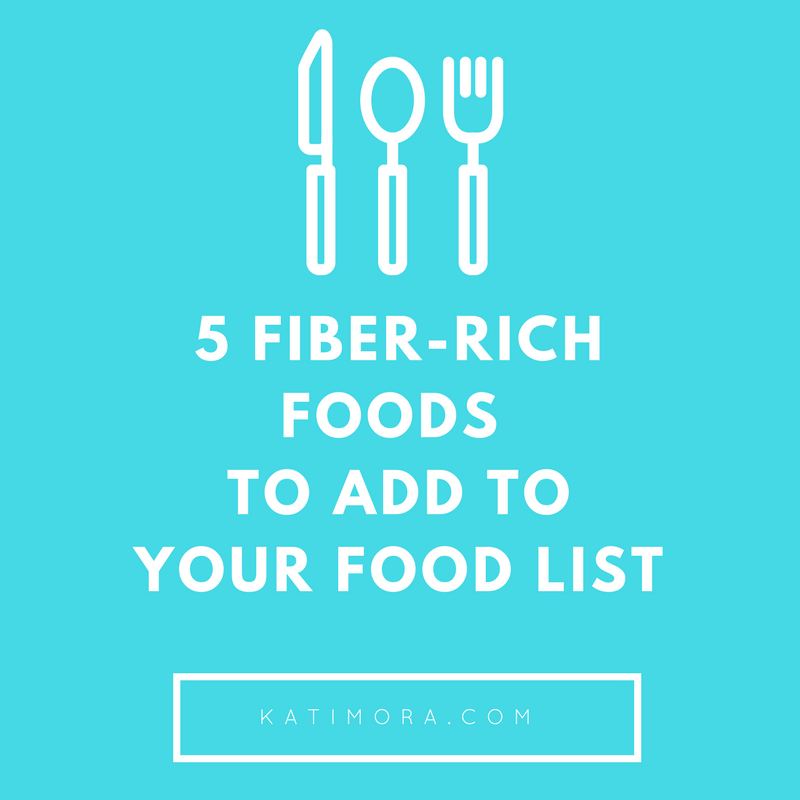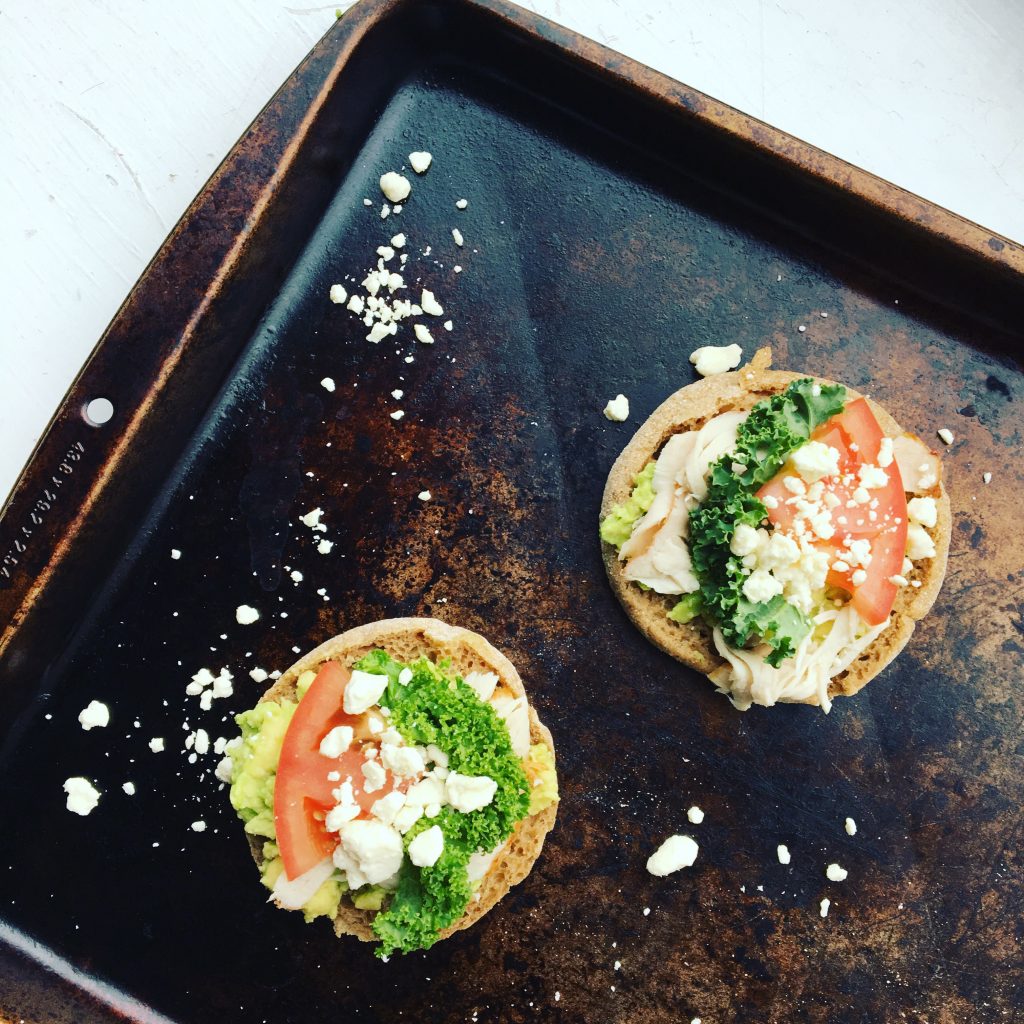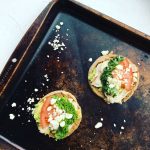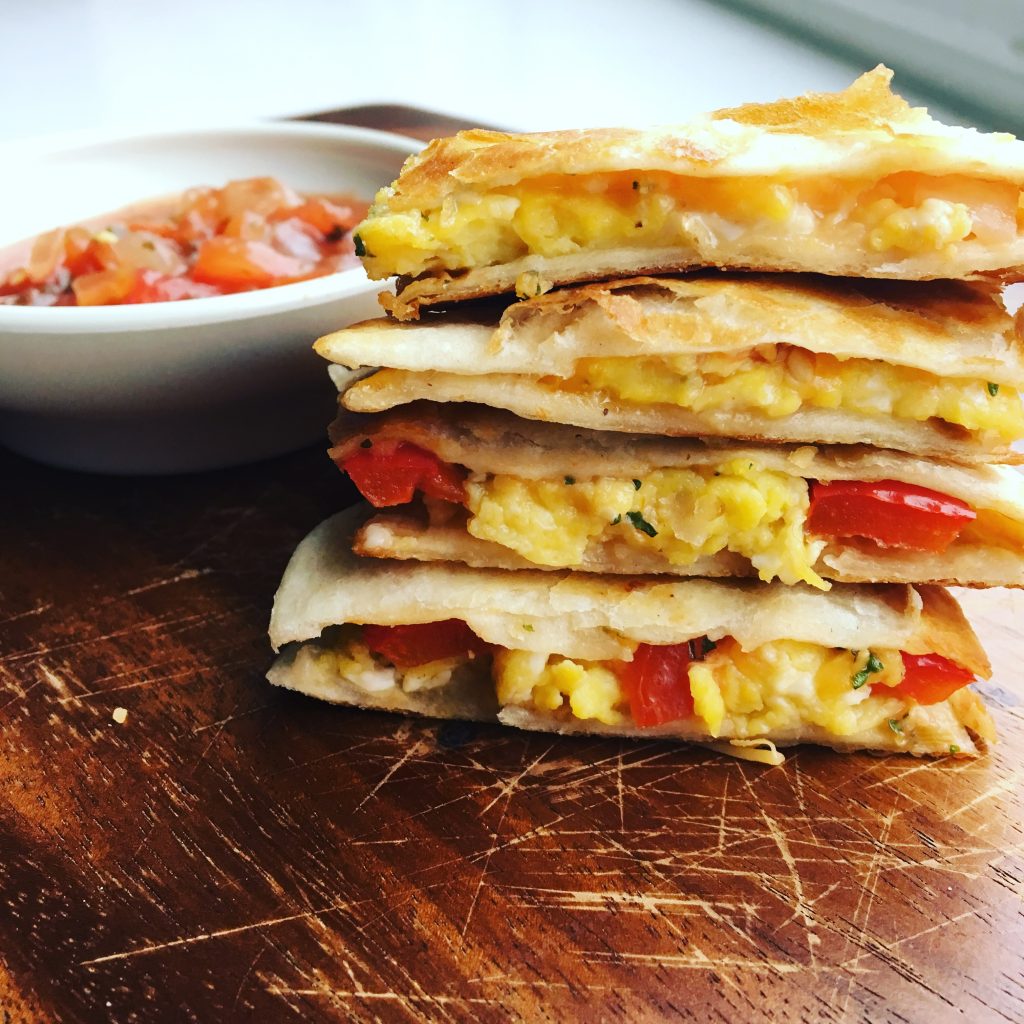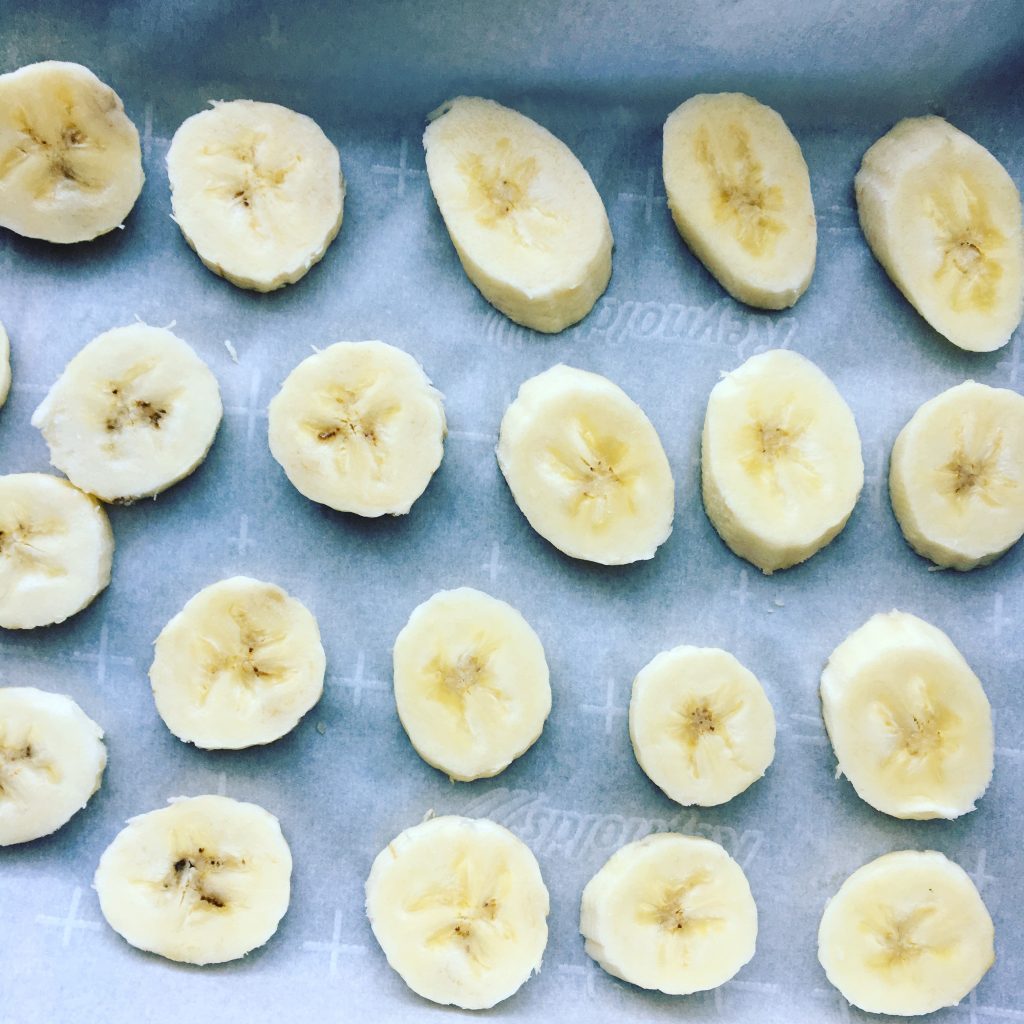Did you know that “get healthy” was the most searched for new year’s resolution last year? So of course, I had to type it in. And guess what I discovered? Over 521,000,000 clickable resources to choose from. That’s a WHOLE lot of information!! Some of it is probably great, a lot of it is probably junk, but either way, none of it will impact you either way if you don’t decide to take action.
Becoming a healthier person sounds pretty good, but it can mean so many different things. If getting healthier is truly what you want to do, then it’s incredibly important to get more specific with what you hope to do and why. You may find that it doesn’t even require an entire year of different – but instead one or two small changes you can implement each and every day. Tackling health this way will allow your goals to be more specific and give you more opportunity to see successes or make changes to your plan if needed.
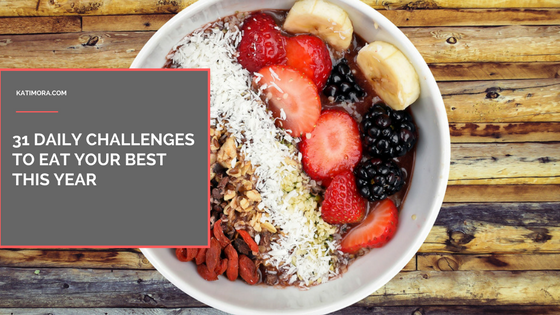
Unlike broad, long-term goals, daily challenges are much more likely to be achieved and, BONUS, will still get you to where you want to be – overall healthier! Not sure what daily challenge you should take on? Here are 31 different ideas to actually “get healthy” this year.
Challenge #1: Make a list of your favorite nourishing foods. The foods you eat should be satisfying, but sometimes we look at a list of foods that are good for us thinking we have to select ONLY the ones that we’ve heard are “super” or we think we HAVE to eat. Wrong! Nourishing foods should be those that offer up nutrition AND enjoyment. So make a list. Once you’ve identified what nutrient-rich foods work for you, look for ways to incorporate them into your meals and snacks regularly to promote good health.
Not quite sure where to start? Check out my food list starter – it’s got some of my favorite nourishing foods on it and you may enjoy them too. PS – if you find it difficult to identify foods that offer up nutrition and enjoyment, it may be time to start experimenting with foods in the kitchen. Different prep and cooking methods may change the way you think about certain foods you’ve snubbed in the past.
Challenge #2: Keep a journal for food thoughts. Unlike other food journals, this one is less about how much you eat and more about why you eat. Write down food thoughts that occur throughout the day and see if you can learn anything about your current food habits through this practice.
Challenge #3: Stock your pantry with herbs and spices. If you want to add flavor to your dishes, herbs and spices are a must. They often have their own added health benefits too, so its a win-win in your kitchen. Consider adding just one a week and experiment with it at meals.
Challenge #4: Find a new recipe to try. To prevent your healthy eating plan from becoming stale, don’t forget to keep things interesting. Find a recipe that looks appealing and give it a whirl. Try to find a recipe with at least one ingredient you don’t use on a regular basis. I have a lot of great recipes for you to choose from if you need a little help getting started.
Challenge #5: Go grocery shopping with a list. Before you can eat well, you have to stock your pantry well. Make a list and head to the grocery store. Think through what meals you want to make and get the necessary ingredients.
Challenge #6: Swap out your large dinner plate for a smaller salad plate. No matter what you eat, portion sizes can help keep your foods in proportion. Smaller plates also allow you to check in on hunger cues sooner since most of us eat until our plate is cleared. Smaller plate, less food, earlier hunger cue check-in time.
Challenge #7: Switch out high-calorie beverages for lower-calorie ones. Soda, sweetened tea, and flavored coffee drinks are notorious for being high in non-satisfying calories. Don’t drink your daily energy needs through beverages alone. Instead, add just a splash of milk to coffee, drink your tea unsweetened, or add a little flavor to your water by adding your favorite frozen fruits or vegetables to the glass.
Challenge #8: Recreate your favorite restaurant dish at home. Instead of dining out, try to recreate your favorite restaurant meal at home. Odds are you’ll consume a more nourishing dish and you’ll have another opportunity to get more comfortable combining different foods and ingredients in your kitchen.
Challenge #9. Try to get 3-4 food groups in at each meal. Once of the best ways to make a meal more flavorful, interesting, and exciting is to use a variety of ingredients. To make sure your meal is nutritionally adequate, focusing on inclusion of 3-4 food groups can be a great way to diversify your meal and feel more satisfaction from it afterwards.
Challenge #10. Create an emergency snack pack. Hunger can strike anytime and often it’s when we are least prepared. To ensure better eating throughout the day, create an emergency snack pack and store it at work, in your car, in your bag, or in your purse. Fill it with foods that will provide you with fiber, protein, and fat.
Challenge #11. Make a meal plan. If you’ve never made a meal plan before, you may find it to be a helpful tool in ensuring you always have the right ingredients on hand. Plan for a day, a week, or a month – whichever works best for you and your schedule.
Curious what my meal plan routine looks like? I share it with you here.
Challenge #12. Eat breakfast daily. If you aren’t a breakfast eater already, make an attempt to incorporate this meal into your day. It’s super important and can be a great way to jump start your morning. Worried because you don’t like the taste of breakfast food? Think beyond eggs and cereal – rice, beans, and even pizza can all be deliciously nutritious breakfast options.
Challenge #13. Try to honor your hunger. Can you tell when your body is hungry? Those internal signals can be hard to hear, so with this challenge, try to pay special attention. The key to managing weight is identifying hunger as soon as it strikes so you can fuel your body appropriately. Waiting too long can often result in overeating.
Challenge #14. Try to honor your fullness. Eat slowly at meals and try to identify when you are comfortably satisfied, not overly full. When you feel satisfied, stop eating. Remember, you can always have a snack later on if hunger strikes again.
Challenge #15. Try a new food. Go to the grocery store and choose one new-to-you food to try. Figure out how to incorporate it into a recipe and see if you can discover what sort of benefits it offers your meal plan.
Challenge #16. Plan a meat-free meal. Lean meats offer a lot nutritionally, but often we forget about many of the plant-based sources of protein and miss out on the benefits they too provide. By planning a meat-free meal, you’ll have to get a little creative and incorporate ingredients that may often get left out.
Challenge #17. Visit a local establishment that’s doing interesting things with nutrient-rich foods. Whether its a co-op or a restaurant featuring farm to table cuisine, see what your community has to offer in the world of food. Often these places offer a unique experience that can make eating well feel special, not like a punishment.
Challenge #18. Invite friends over for a meal. If you want your eating habits to stick, you have to make them the new normal. Consider hosting dinner at your house and make something nutritious and delicious. Your friends will probably love the opportunity to try something new.
Challenge #19. Create a more nutrient-rich dessert and share it with your neighbors. Baking cookies can be a lot of fun and is a tradition for many, but who says you can’t improve upon an old recipe? Make cookies with better-for-you ingredients and then share them with a neighbor. You’ll have fun baking and make someone’s day by bringing them delicious treats.
Challenge #20. Set and Share Your Goals. If you want change to occur, you have to know why you want change to begin with. Set realistic and specific goals for yourself and share them with others. I always enjoy hearing about the successes my readers have, so feel free to share your story with me on Facebook, Twitter or Instagram.
Challenge #21. Let go of certain foods. If you are sick and tired of bananas, stop eating bananas. Yes, they do offer you quality nutrition, BUT why not give them up to make room for other fruits to try during this season? Make a list of foods you are tired off and take a break from them. Make room for more new-to-you foods.
Challenge #22. Create an “eating-only” zone. It’s hard to focus on things like hunger and fullness cues if you have multiple distractions pulling you in all different directions. Eat intentionally by creating zones where you can focus on the process of eating. The dining room table is a common zone, but at work it could be a table in your break-room, a seat by a window, or a bench in the hallway. Anywhere that you won’t be distracted by work, television, computers, or your cell phone.
Challenge #23. Rethink a favorite meal. You don’t have to start from scratch when it comes to eating more nutritiously. Many of your favorite meals may already offer a lot from a nutritional perspective and you already know that you enjoy them. Write down ways that you could make your favorite meal even better for you. Maybe its revamping the ingredient list or adding a vegetable or fruit based side.
Challenge #24. Make family time, cooking time. Just like having a family game night, an evening in the kitchen is a great way to spend time together. Choose a recipe or host your own family version of Chopped with whatever ingredients you have on hand. See who can come up with the most creative dish using the most nutrient-rich ingredients. Who knows? You may even develop a new family favorite.
Challenge #25. Try a new grain. Wheat isn’t the only nutrient-rich grain on the block anymore. Quinoa, oats, bulgur, brown rice, barley, rye, and buckwheat are just a few more unique grain varieties. They all offer a lot nutritionally and can add a little depth and creativity to your current meal plan.
Challenge #26. Take the fiber challenge. Only 1 out of 10 Americans get enough fiber on a daily basis, which is unfortunate because many fiber-rich foods offer a variety of other important nutrients. too. If you are a woman, try to get 25 grams of fiber daily. For men, aim for 38 grams. Incorporating whole grains, fruits, vegetables, beans, and legumes can all help you achieve that goal.
Challenge #27. Pack a lunch. If you want to eat well and keep your portions in check, you may find packing lunch to be extremely helpful. Take the opportunity to pack a well-balance meal (3-4 food groups) and foods you love.
Challenge #28. Attend a cooking class or follow one online. If you aren’t sure how to get started in the kitchen, consider taking a class or two. Find one locally or search for one online that you can do in your own kitchen. Again, the more comfortable you get with the process and various ingredients, the easier it will be to whip up a variety of tasty options.
Challenge #29. Prep meals in advance. If you want to eat more nourishing meals, but don’t feel like you have the time to create something at home each night, consider prepping some of your meals or at least some of the ingredients in advance. Set a date and time and stick to it.
Challenge #30. Buy a new cookbook. Exploring new cuisines can be as easy as picking up a new cookbook from a local bookstore or off of Amazon. Make a plan to try the recipes throughout the book on a daily, weekly, or monthly schedule.
Challenge #31. Get creative with juice. For an extra kick of flavor, consider adding your favorite 100% juice to your foods. Grape juice with red meat or orange juice with chicken. Citrus juice can also add a lot of flavor to your favorite veggies or salad.
